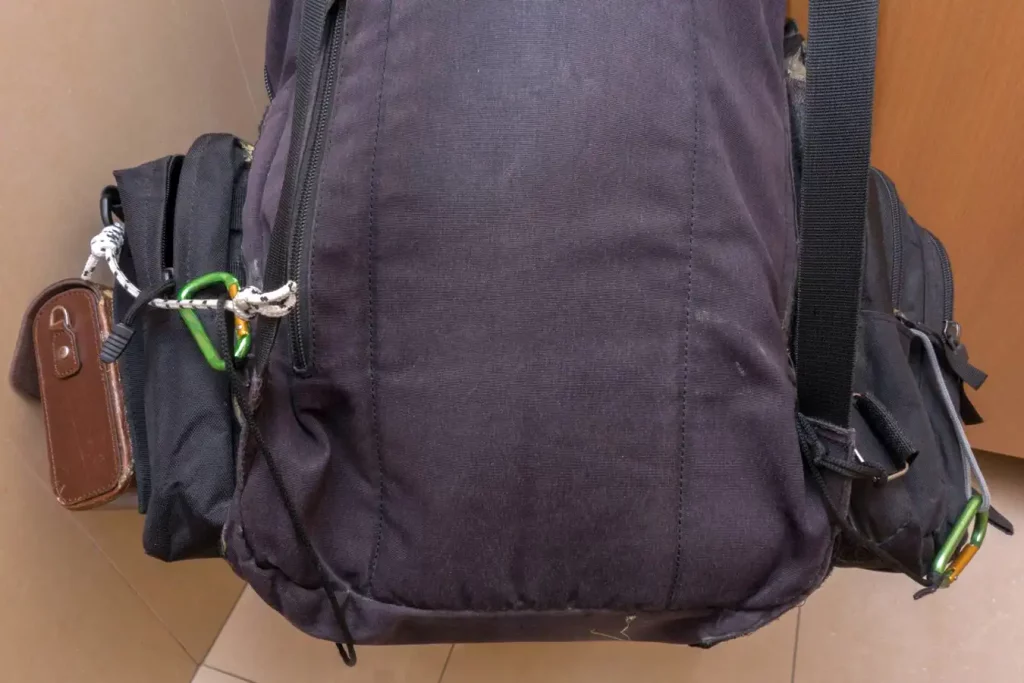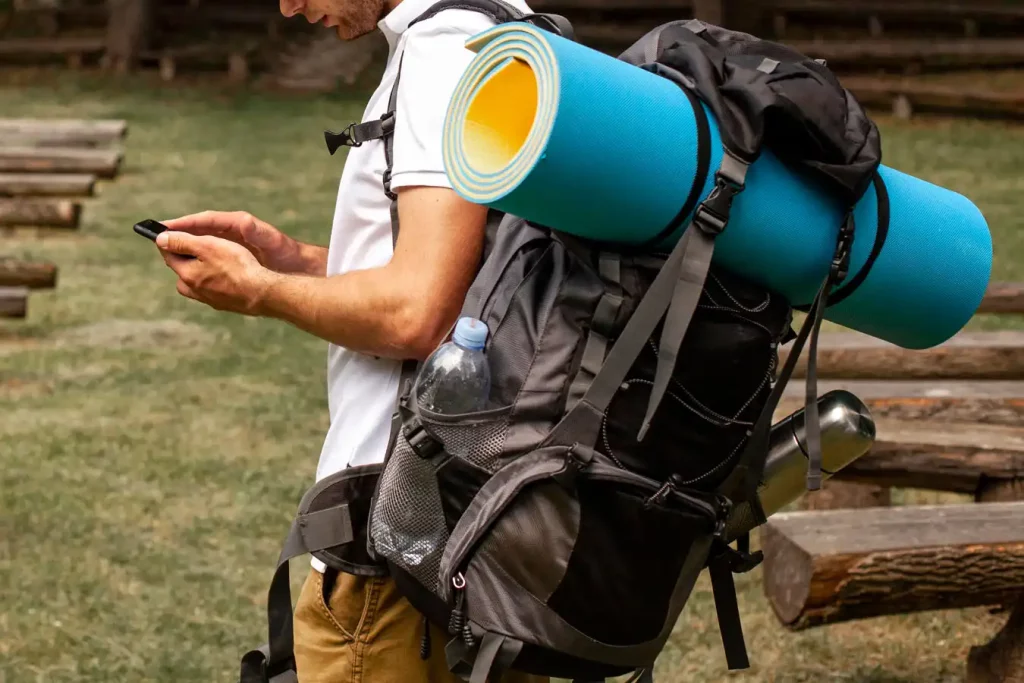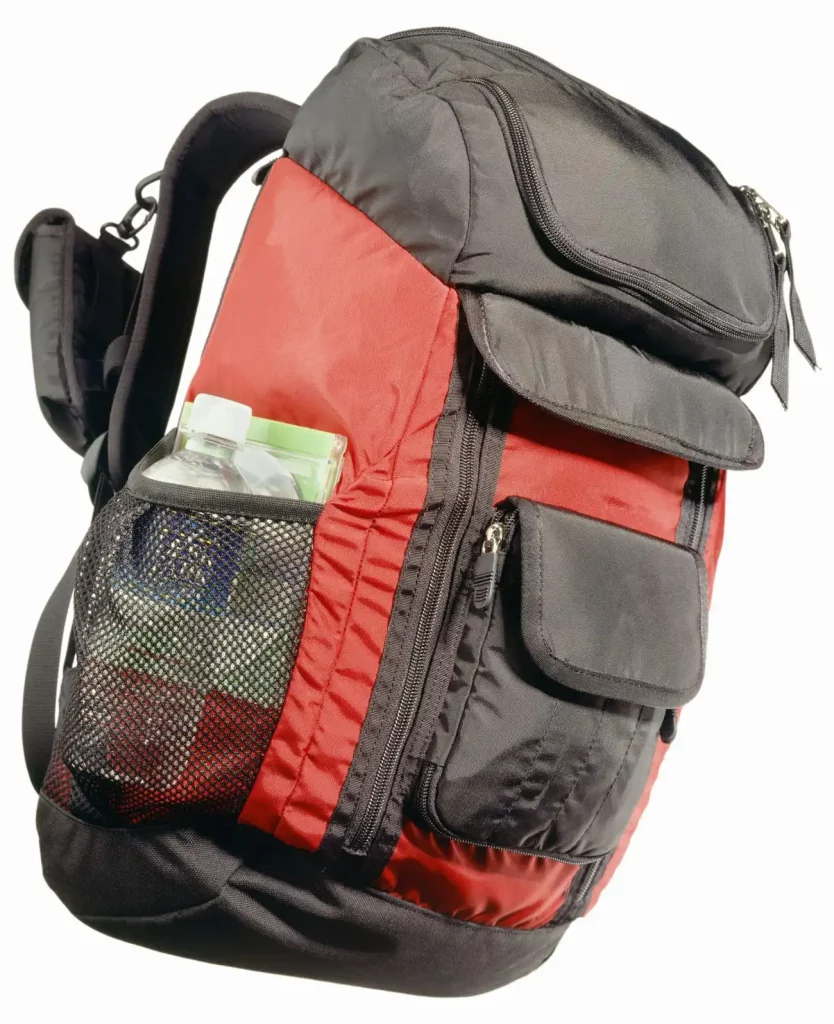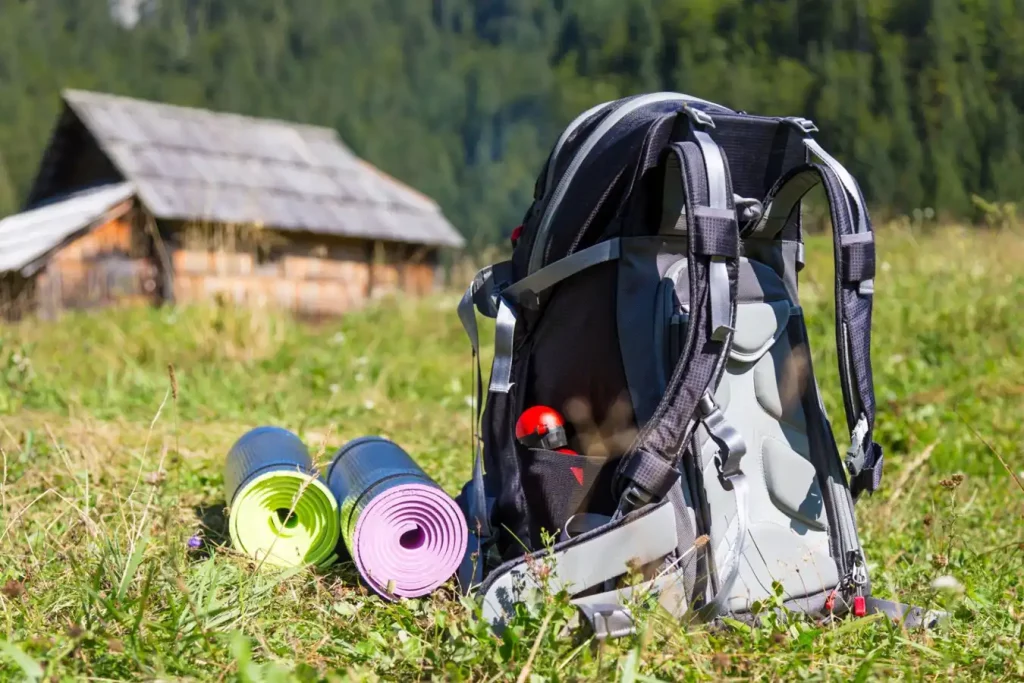“How to use backpack loops?” Ever found yourself staring at those dangly bits on your new pack, wondering what magic they hold?
Trust me, we’ve all been there, clueless and slightly embarrassed.
But here’s the thing: those loops?
Let’s untangle the mystery together and get you packing like a pro in no time!
The Anatomy of a Backpack: Understanding the Loops
Backpacks, whether for hiking, travel, or school, are meticulously designed with practicality in mind. An integral part of this practicality comes from those small, often overlooked elements – the loops.
Understanding their function is the first step towards maximizing your backpack’s utility. So, let’s break down the anatomy of your backpack and understand these loops.

Types of Loops and Their Location on a Backpack
Generally, backpacks come with several types of loops and they can be located at different parts of the backpack. Here are a few common ones:
- Compression Straps: These are the loops you’ll typically find on the sides of your backpack. They’re designed to compress your backpack’s content and keep it compact, especially helpful when you’re dealing with bulky items.
- Daisy Chains: These are the series of loops often found on the front or sides of outdoor or hiking backpacks. They look like a chain of loops and are perfect for attaching carabiners, ropes, or other gear.
- Ice Axe Loops: Commonly found in hiking backpacks, these are for safely stowing an ice axe or trekking poles.
- Gear Loops: Often located at the bottom or front of the backpack, these loops can be used to attach larger gear that won’t fit inside the backpack.
The Design Purpose of Each Type of Loop
Each loop on your backpack serves a specific purpose, often contributing to the overall versatility of your pack.
Compression Straps, for example, are not just there to reduce the physical size of your backpack, but they also play a vital role in weight distribution. By pulling the weight closer to your body, these loops make the backpack more comfortable to carry, especially over long distances.
Daisy Chains are probably the most multipurpose loops on your backpack. They are like your portable hanging rack, where you can attach anything from a water bottle to a camping mug using a carabiner.
Ice Axe Loops, while they might not see much use in your day-to-day life, can be a lifesaver when you’re out on a hike or a mountain climb. They are specifically designed to safely carry sharp or pointy gear that you wouldn’t want inside your pack.
Gear Loops serve the function of carrying those items that are too big or awkward to fit inside your backpack. Think sleeping bags, yoga mats, or a pair of sneakers.
Common Uses for Backpack Loops
Now that we’ve gotten to know our loops a little better, let’s explore some practical uses for them. You’d be surprised at just how much these little additions can enhance your backpack’s functionality, from carrying extra gear to attaching essential accessories and hiking equipment.

Carrying Extra Gear: Tents, Sleeping Bags, and More
Often, our backpacks alone can’t accommodate all our gear, especially when we’re heading out for a camping or hiking trip. That’s where your backpack loops come in handy. For instance, the gear loops, typically found at the bottom of your backpack, are great for strapping on larger items like tents or sleeping bags.
Simply roll your gear, use straps or carabiners to secure them, and attach them to the loops. Not only does this save space inside your backpack, but it also provides quick access when setting up camp.
Accessory Attachments: Water Bottles, Compasses, and Other Tools
Backpack loops can be a blessing when it comes to keeping essential items within arm’s reach. For example, daisy chain loops can be used to attach water bottles, compasses, or a flashlight using carabiners. This keeps them accessible and prevents them from getting lost inside your backpack. Additionally, you can also use these loops to attach your keychains or ID cards when you’re on the move.
Attachments for Climbing and Hiking Gear
For adventure enthusiasts, backpack loops are indispensable. They allow you to attach specialized gear like ice axes, climbing ropes, and trekking poles. For instance, ice axe loops, found on many hiking backpacks, keep these potentially dangerous tools securely stowed and easily accessible when you need them. Remember, safety should be a priority when adventuring outdoors, and using your backpack’s loops correctly can contribute to a safer and more enjoyable experience.
Step-by-Step Guide: How to Use Backpack Loops
Now that we’ve explored the practical uses of backpack loops, it’s time to roll up our sleeves and dive into the how-tos. Utilizing your loops efficiently requires a blend of skills, from knot-tying to understanding weight distribution, not forgetting a few safety considerations.

Securing Items: Correct Knots and Fastening Techniques
Properly attaching items to your backpack loops is crucial to prevent them from falling off during your journey. Here are some steps to secure your gear effectively:
- Identify the Suitable Loop: First, find the appropriate loop for your item. For example, if you’re attaching a sleeping bag, look for the gear loops usually found at the bottom of your backpack.
- Use Carabiners or Straps: For items like water bottles or compasses, carabiners are your best bet. Simply clip them onto your daisy chain loops. For larger items like tents or sleeping bags, you’ll need straps.
- Tie a Secure Knot: If you’re using straps, ensure that they are tightly tied. The square knot or the double overhand knot are two reliable options for this purpose.
Balancing Your Load: Importance of Even Weight Distribution
An unbalanced backpack can cause discomfort and, in extreme cases, lead to injuries. To avoid this, you need to balance your load correctly when using your loops. Here’s how:
- Heavy Items Close to the Middle: When packing your backpack, keep heavier items close to your back and centered vertically. This promotes balance and reduces strain on your back.
- Use All Available Loops: Distribute your gear evenly across all available loops. Don’t overload one side.
- Regularly Adjust Your Load: As you use items from your backpack, the weight distribution may change. Regularly adjust your gear to maintain balance.
Safety Tips and Considerations When Using Loops
While backpack loops can enhance your backpack’s functionality, it’s crucial to use them safely. Here are a few tips:
- Don’t Overload: Resist the temptation to attach too many items to your backpack. Overloading can cause discomfort and may damage your backpack.
- Ensure Secure Attachment: Double-check that all items are securely attached to avoid losing them during your journey.
- Consider the Terrain: When hiking or climbing, ensure that attached items won’t snag on branches or rocks.
By mastering these simple techniques, you can make the most out of your backpack loops. Whether you’re a casual traveler or an outdoor enthusiast, understanding how to use these features will definitely enhance your backpacking experience.
Learn more: How to Carry Snowshoes on Backpack
Advanced Tips for Utilizing Your Backpack Loops
You’ve mastered the basics of using your backpack loops. Now, let’s take things up a notch with some advanced tips and tricks. Brace yourself for some mind-blowing uses that you might never have imagined!
Creative Uses for Loops: Expanding Carrying Capacity
While loops are commonly used to carry tents, water bottles, and other gear, the sky’s the limit when it comes to their potential uses.
For instance, have you thought about using them to attach a small solar panel? This can be a game-changer for long hiking trips where you might need to charge your devices. Or consider using loops to attach a rolled-up map for quick and easy access. You could also use carabiners to hang your shoes or wet clothes to dry while you hike.
Using Loops for First Aid and Survival Purposes
In survival situations, your backpack loops could become unexpectedly vital. You could tie a whistle to a loop for easy access in case of an emergency.
You could also attach a first aid kit to a loop, ensuring quick accessibility when every second counts. Some outdoors enthusiasts even recommend hanging a small pouch with essential survival items like a fire starter, knife, or signal mirror on a loop for immediate access.
Care and Maintenance of Your Backpack Loops
A well-maintained backpack can serve you for many adventures to come. Here’s how to keep your backpack loops in top-notch condition:
Inspecting for Wear and Tear
Regular inspections are key to ensuring your loops remain functional and safe. Look out for frayed fabric, loose threads, or damage from sharp gear. Pay extra attention to the seams, as this is where wear often first appears.
Repairing or Replacing Damaged Loops
Should you find any damage during your inspection, act quickly to repair or replace the loop. For minor fraying, a quick fix with a needle and thread can do the trick. For more significant damage, consider seeking professional help. Some backpack manufacturers offer repair services, ensuring the work is done properly without affecting the pack’s integrity.
FAQs about Using Backpack Loops
What are the loops on the bottom of my backpack?
What are the loops on the front of a backpack?
How do you use a backpack clip?
How do you wear backpack straps?
Final Words
Understanding the function and importance of backpack loops, identifying their different types, learning how to use them effectively, and caring for them can turn your backpack from a simple bag into a versatile tool for every adventure.
No matter if you’re carrying extra gear for a multi-day trek or simply hanging your reusable coffee cup on a city tour, every loop on your backpack has potential. So, go ahead. Explore the possibilities, and let your backpack loops make every trip a little bit easier and a lot more exciting. Happy backpacking!


